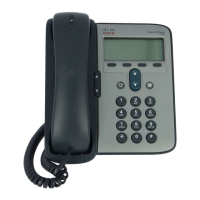Hunt Groups
If your organization receives a large number of incoming calls, you might be a member of a hunt group. A
hunt group includes a series of directory numbers that share the incoming call load. When the first directory
number in the hunt group is busy, the system hunts for the next available directory number in the group and
directs the call to that phone.
When you are away from your phone, you can prevent hunt group calls from ringing your phone by logging
out of hunt groups.
Tip
Logging out of hunt groups does not prevent nonhunt group calls from ringing your phone.
Log In and Out of Hunt Groups
Procedure
Step 1
Press HLog. You are now logged into the Hunt Group.
Step 2
Press HLog. Your phone screen displays Logged out of Hunt Group.
Shared Lines
Your system administrator might ask you to use a shared line if you:
•
Have multiple phones and want one phone number
•
Share call-handling tasks with coworkers
•
Handle calls on behalf of a manager
Remote-In-Use Icon
The remote-in-use icon appears when another phone that shares your line has a connected call. You can
place and receive calls as usual on the shared line, even when the remote-in-use icon appears.
Call Information and Barge
Phones that share a line each display information about calls that are placed and received on the shared line.
This information might include caller ID and call duration. See Privacy, on page 37 for exceptions.
When call information is visible in this way, you and coworkers who share a line can add yourselves to calls
using either Barge or cBarge. See Barge, cBarge, and Shared-Line Calls, on page 37.
Cisco Unified IP Phones 7906G and 7911G User Guide for Cisco Unified Communications Manager 9.0 (SCCP
and SIP)
36
Calling Features
Hunt Groups

